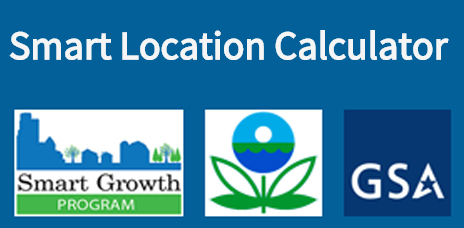GSA, EPA Present Commuter-Friendly Tool to California Leaders
Contributed by David Leites, Project Manager

Last month, representatives from the U.S. General Services Administration and the Environmental Protection Agency co-hosted a workshop in Sacramento to demonstrate the Smart Location Calculator (SLC), a new tool that explores how workplace location affects worker commute travel. The event was attended by representatives from the California Department of General Services, the Governor’s Office of Planning and Research, and the California Strategic Growth Council.
The Smart Location Calculator was developed through a long standing GSA and EPA partnership. This map-based tool measures and compares facility location efficiency and has the potential to be used by local, state, and federal agencies to support real estate acquisition decisions.
Much like energy efficiency, location efficiency reduces resource demands while fostering a healthier, more sustainable environment. Where a building is located can play a major role in reducing greenhouse gas (GHG) emissions by decreasing the number of miles people need to drive to reach a specific federal facility. Location efficient commercial facilities are generally:
- accessible via multiple transportation options, including public transit and active transportation (walking/biking);
- centrally located within their "commute shed" or region so as to maximize accessibility and minimize travel distances for employees and other visitors; and
- integrated within a mixed-use environment that offers easy access to services and destinations.
The Smart Location Calculator provides a Smart Location Index (SLI) that considers development densities, land use, urban design, auto accessibility, rail accessibility, and residential densities.This SLI score identifies the likelihood that employees will drive to their workplace and the associated GHG emissions created as compared to if their workplace was located in another section within a metro area.
The calculator also provides data on worker mode-share (the percentage of travellers using a particular type of transportation), vehicle miles traveled, and workplace accessibility via transit. This is a fundamental consideration in GSA’s efforts to improve sustainability and promote sound urban planning.
GSA currently uses the Smart Location Calculator as one of the factors considered when evaluating potential lease space. This tool could easily be adapted for state and local projects as well and has already piqued the interest of the California Department of General Services. With California’s environmental mandates and the state’s tendency to lead by example on environmental issues, the Pacific Rim Region is a great place to begin the roll out of this new tool.

 U.S. General Services Administration
U.S. General Services Administration